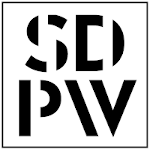Wykaz obszarów badawczych związanych z tagiem Fotonika:
| # | Obszar badawczy | Dziedzina naukowa |
|---|---|---|
| 1 |
The research area concerns technology, characterization and diagnostics of semiconductor materials, structures and devices, transparent and flexible electronics, photonics, as well as technology of low-dimensional materials and structures. In particular: semiconductor technologies (development, modeling and optimization of materials and test structures and devices), technologies for nanoelectronics, nanophotonics, sensors and bioengineering, technologies for MEMS / MOEMS and IoT design, materials engineering, integrated electronics and photonics, materials engineering.
|
|
| 2 |
I am involved in the development of new computational microscopy methods for the study of living cells and tissue sections. I use techniques of classical optoelectronic data (images) registration and their subsequent numerical reconstruction with specialized algorithms (also based on machine learning and deep learning) to overcome limitations related to small field of view, low signal to noise ratio, poor contrast etc. Computational microscopy techniques of particular interest include interference microscopy, diffraction tomography, Fourier ptychography, and holographic lensless microscopy. The opto-numerical microscopes being developed allow key live cell measurements to be made without the photochemical stress associated with fluorescent staining. Our techniques are gaining popularity among biologists with whom I collaborate extensively. I am also conducting collaborative research projects with researchers from the University of Valencia (Prof. Vicente Micó's group), Arctic University of Norway in Tromso (Prof. Balpreet Ahluwalia's group) and Nanjing University (Prof. Chao Zuo's group). I invite those willing to contact me and collaborate on an interdisciplinary PhD combining photonics, data analysis and biomedical engineering.
|
|
| 3 |
Badania prowadzone sią w trzech częściowo pokrywajacych się obszarach: (1) rozwój nowych multimodalnych metod i systemów optycznych słyżących badaniom trójwymiarowych mikrostruktur biologicznych i technicznych, (2) rozwój metod przetwarzania danych obrazowych (włącznie z AI) oraz (3) ich zastosowania do rozwi,ązywania problemów biomedycznych na poziomie komórkowym i tkankowym. Pierwszy z obszarów obejmuje zagadnienia rozwoju systemów ilościowego obrazowania fazowego z wykorzystaniem cyfrowej mikroskopii holograficznej, optycznej tomografii dyfrakcyjnej i optycznej tomografii koherencyjnej. W drugim obszarze skupiam się na rozwoju nowych algorytmów do analizy przestrzenno-czasowej multimodalnych danych pozyskiwanych w/w systemami. Trzeci obszar obejmuje zagadnienia zwiazane z zastosowaniami (i interpretacją) pozyskanych danych w biomedycynie (badania dot. chorób neurodegeneracyjnych).
|
|
| 4 |
Theoretical (numerical simulations) and experimental research in the field of fiber optics, photonics, photonics micro- and nanostructures, optofluidics, fiber optic sensors, and tunable fiber optic components. Research in the field of fabrication of three-dimensional photonic (and not only) microstructures using two-photon polymerization (based on the commercial Nanoscribe device) and projection microstereolithography (based on self-made experimental setup). Research related to photo-alignment of liquid crystal molecules, development of an automated system allowing for the production of one- and two-dimensional complex patterns of liquid crystal molecules with micrometer resolution. Analysis of samples using optical, digital, polarimetric and scanning electron microscopy. Automation and miniaturization of optical and photomechanical experimental systems.
|
|
| 5 |
Research on polarization and depolarization phenomena of light beams in microstructured optical fibers filled with anisotropic materials (liquid crystals).
|
|
| 6 |
The proposed research area encompasses the description, modeling, and design of circuits and systems for fast pulsed electronics. This area may encompass topics related to fast pulsed electronics, including those for photonics and laser technology. The proposed research area involves the use of modern electronic components (e.g., HEMTs) and their application in new topologies of controlled switching systems.
|
